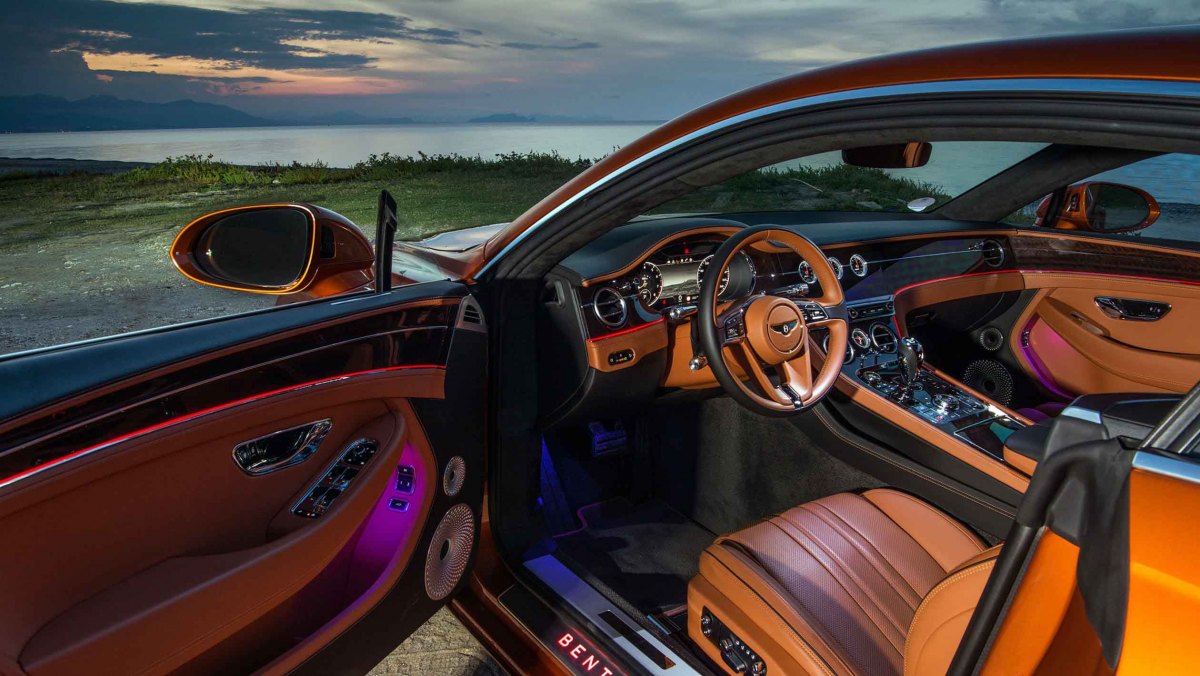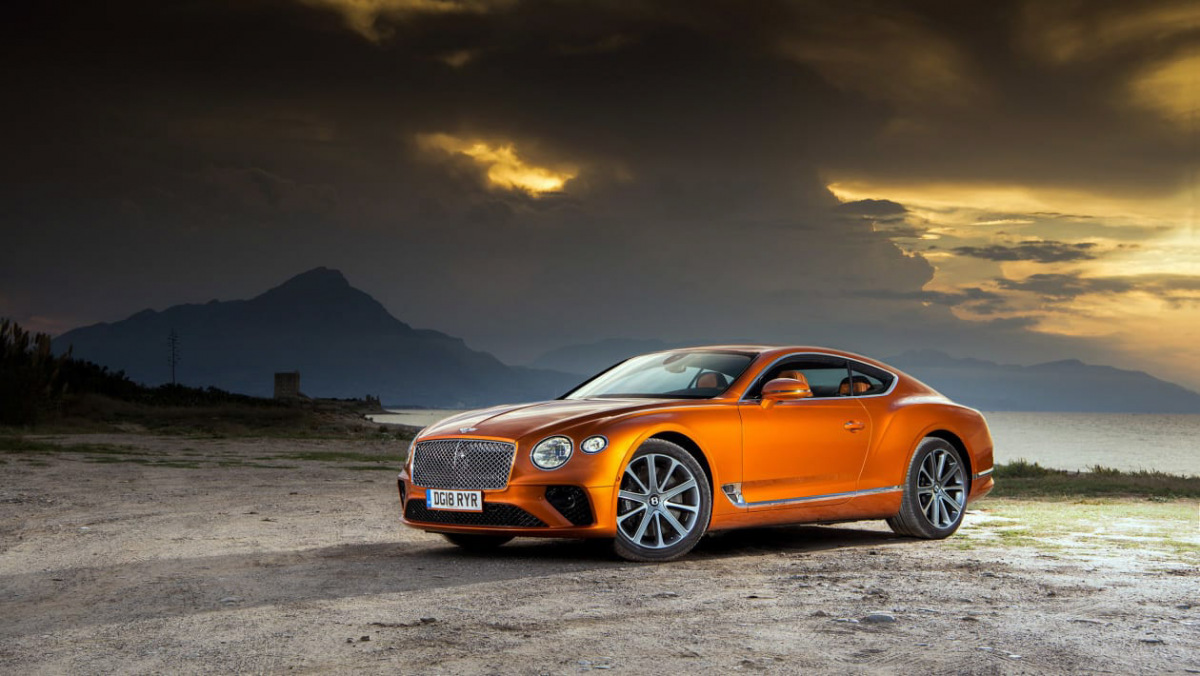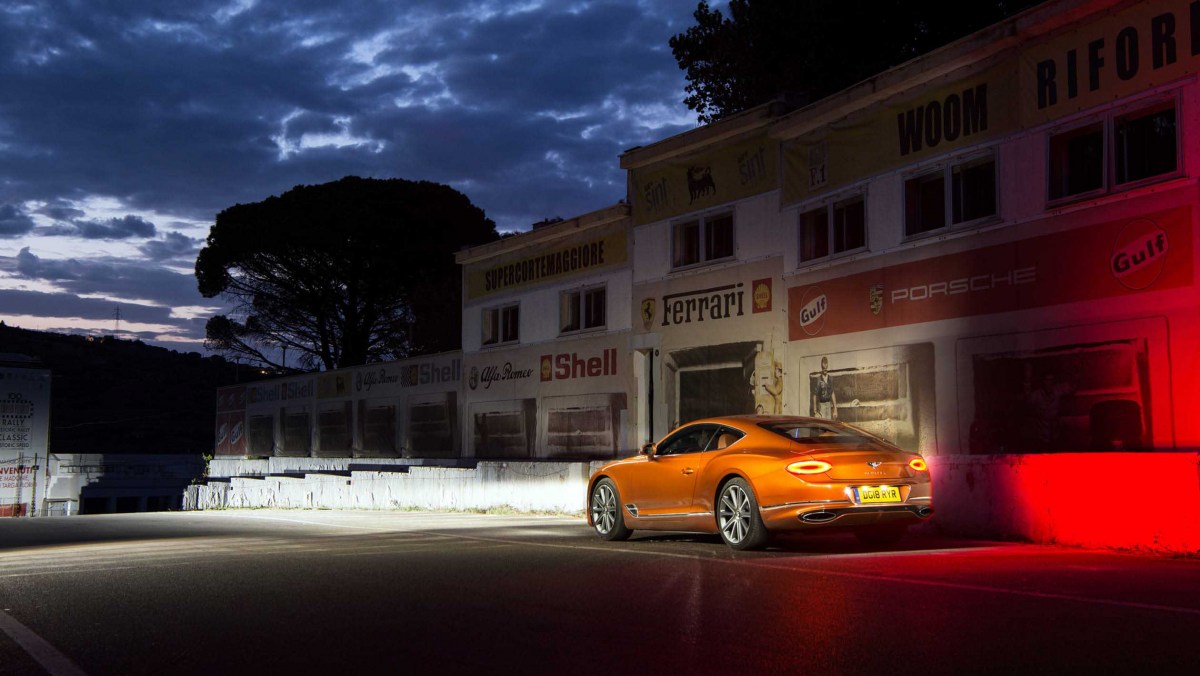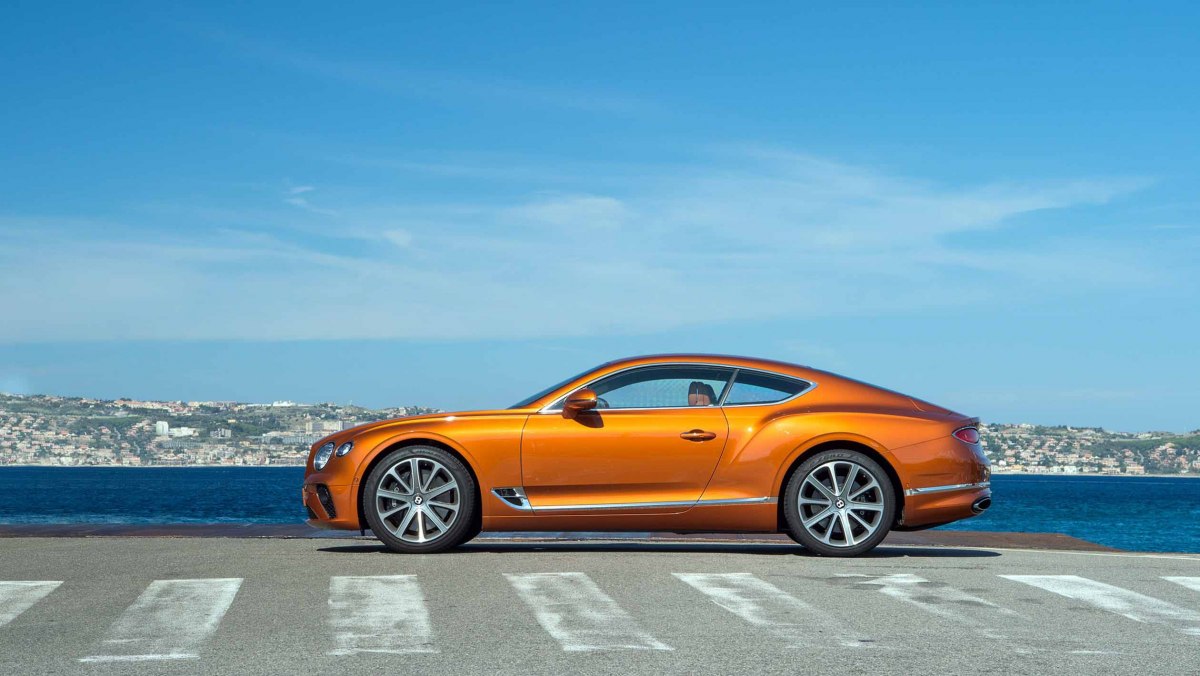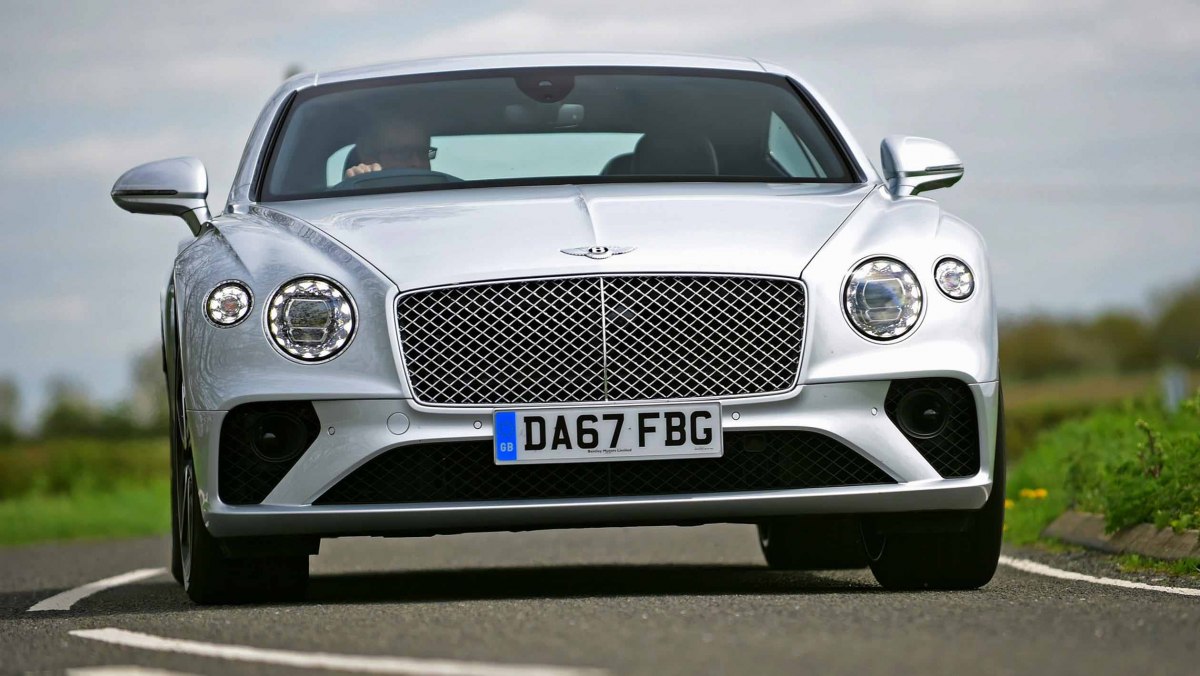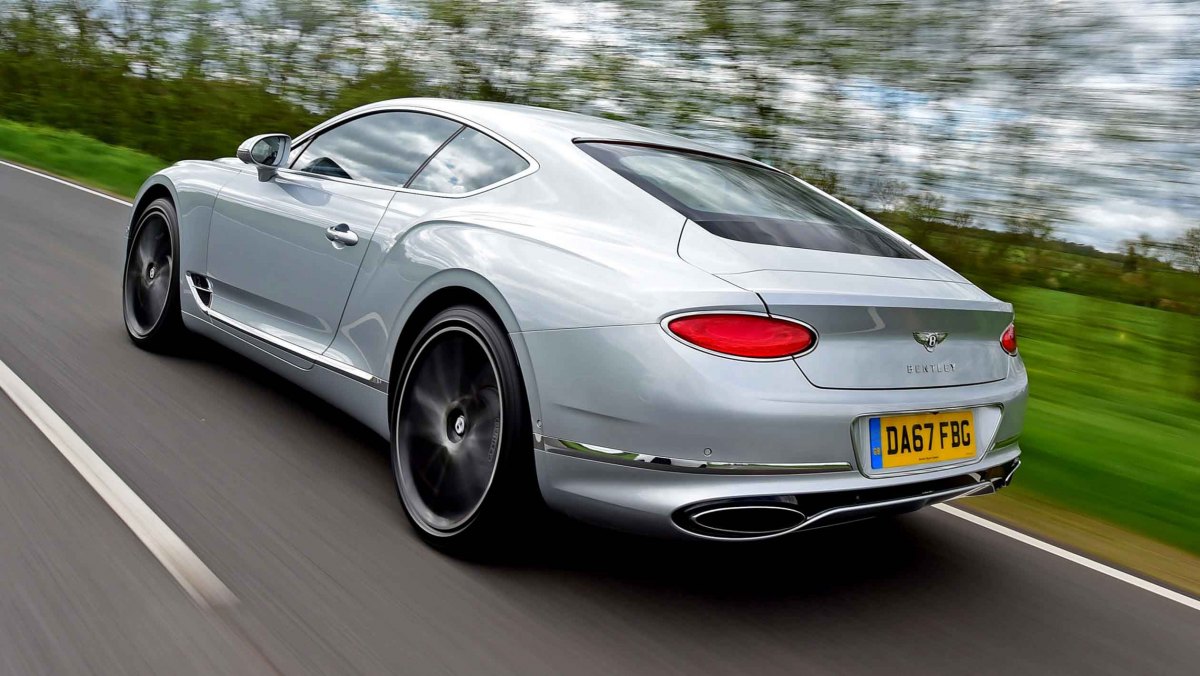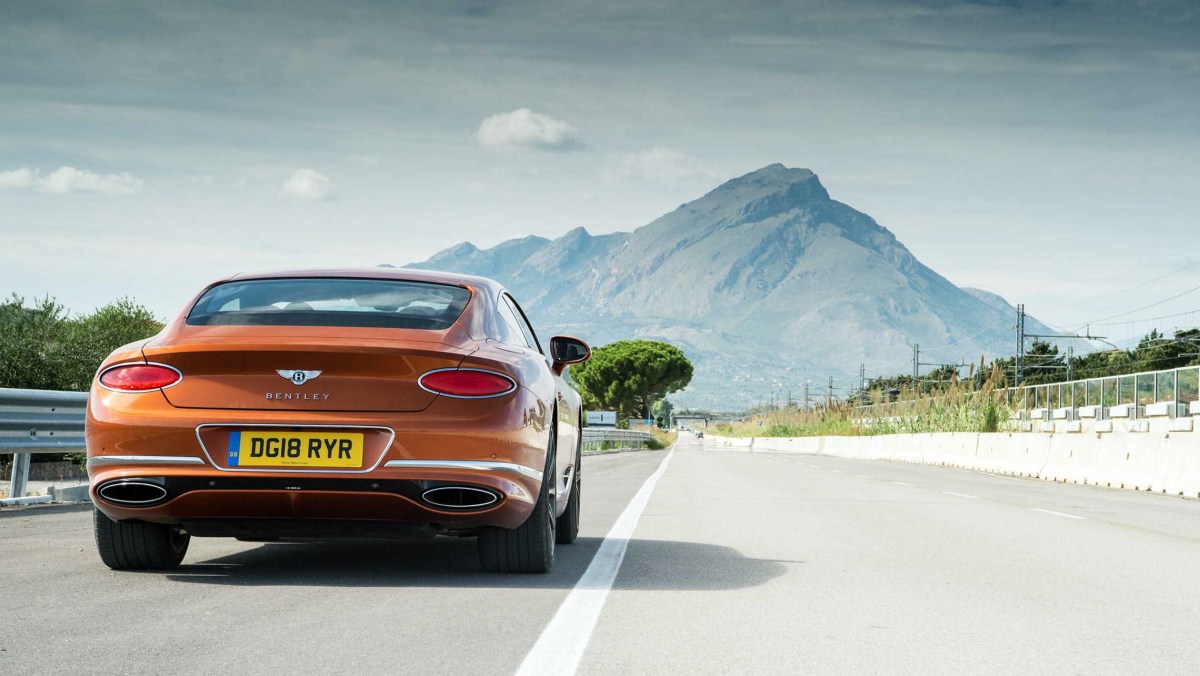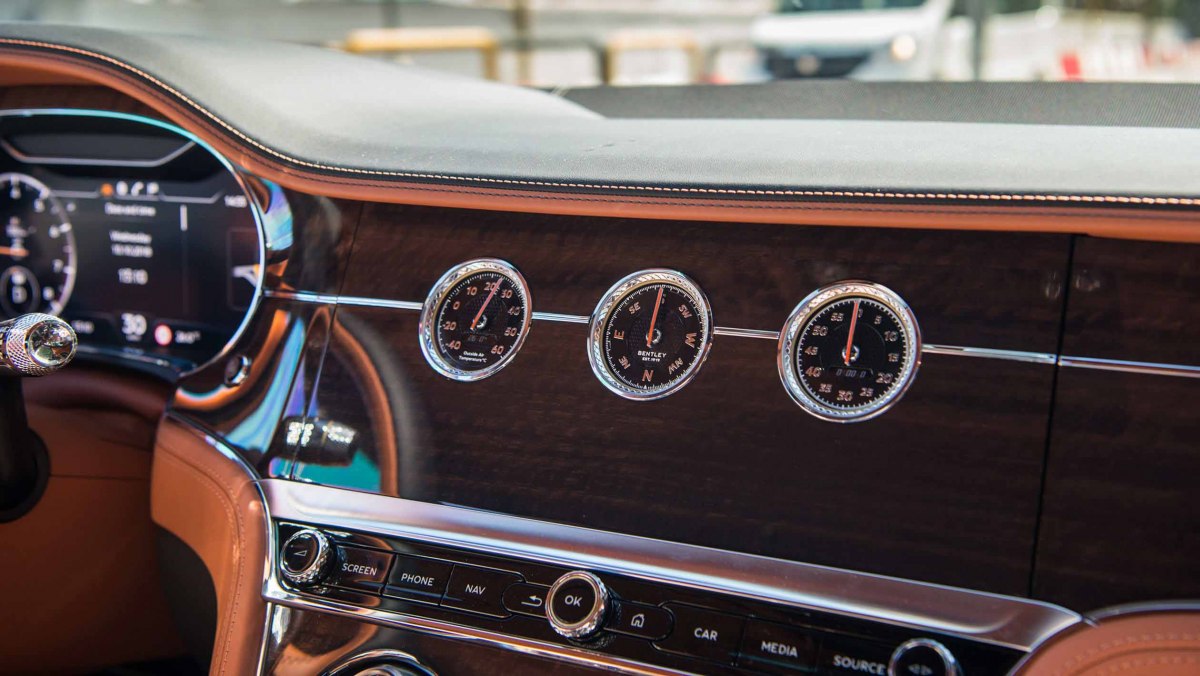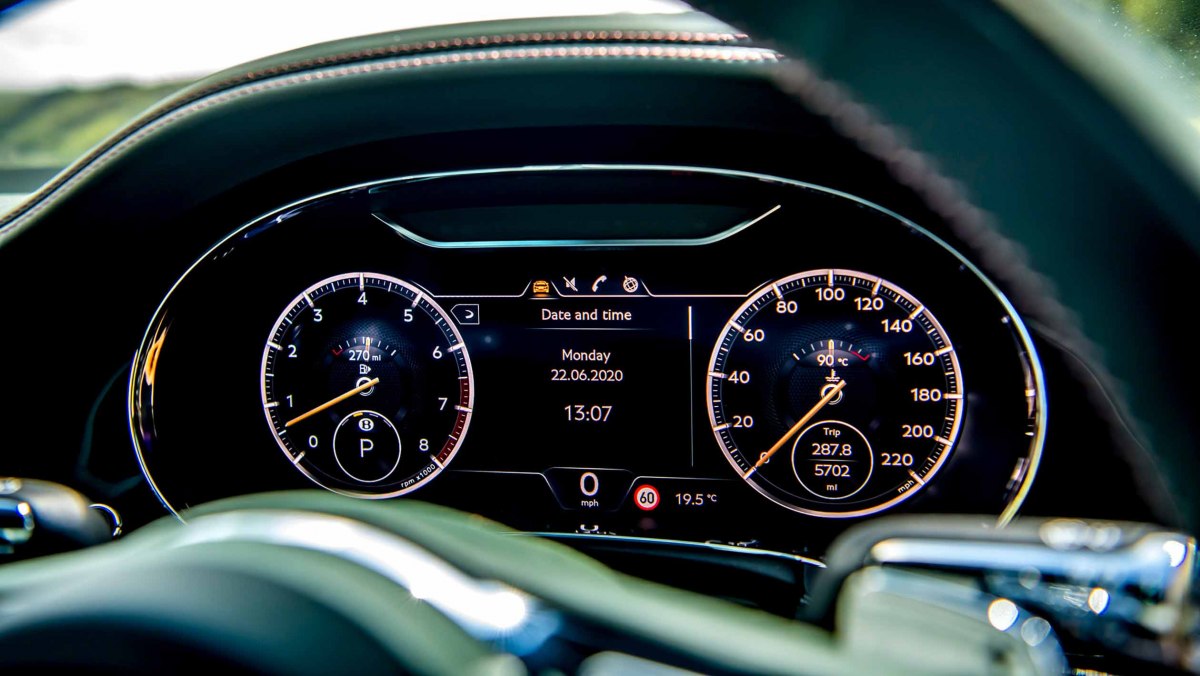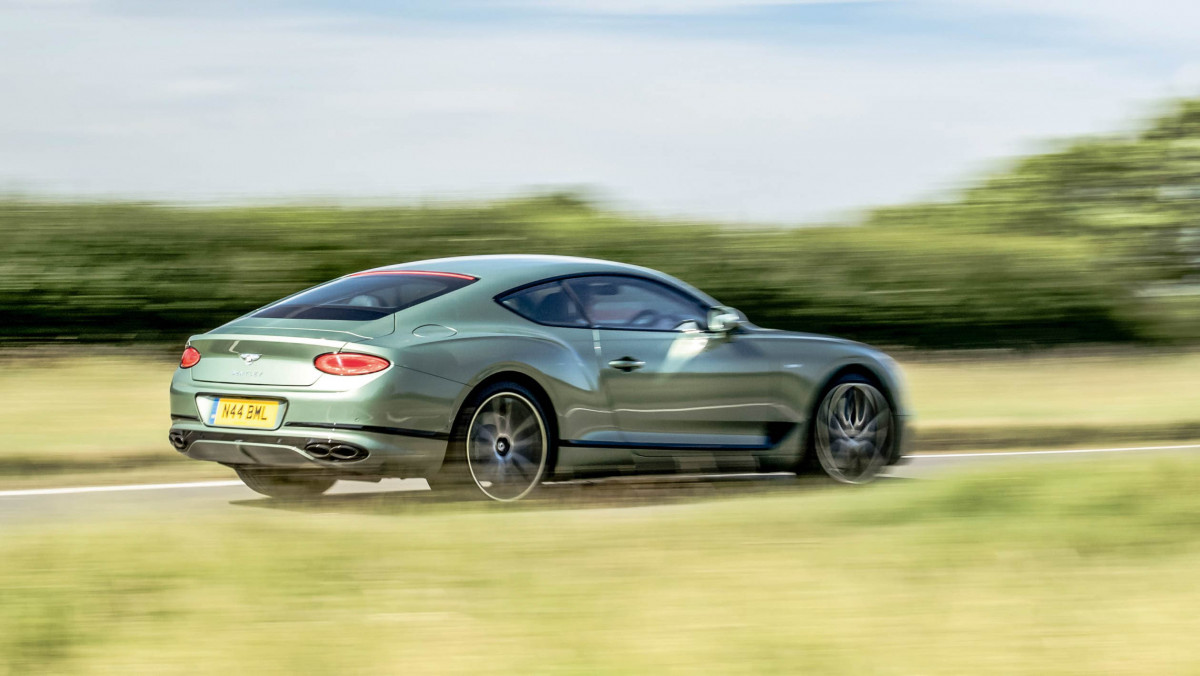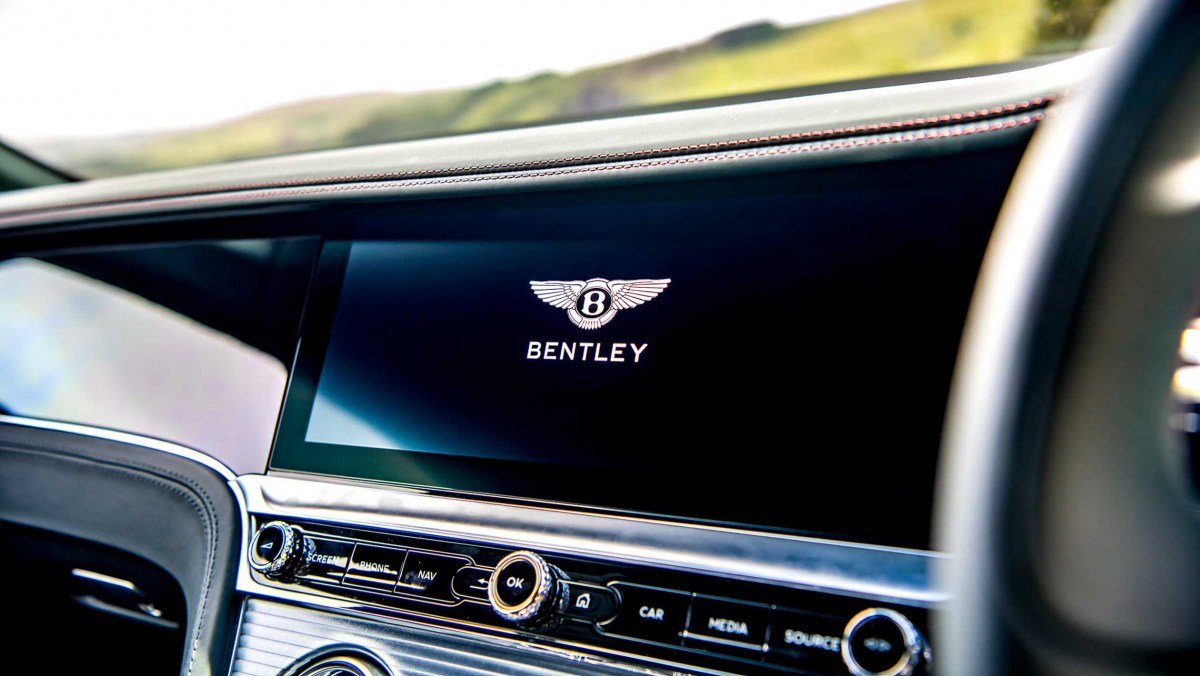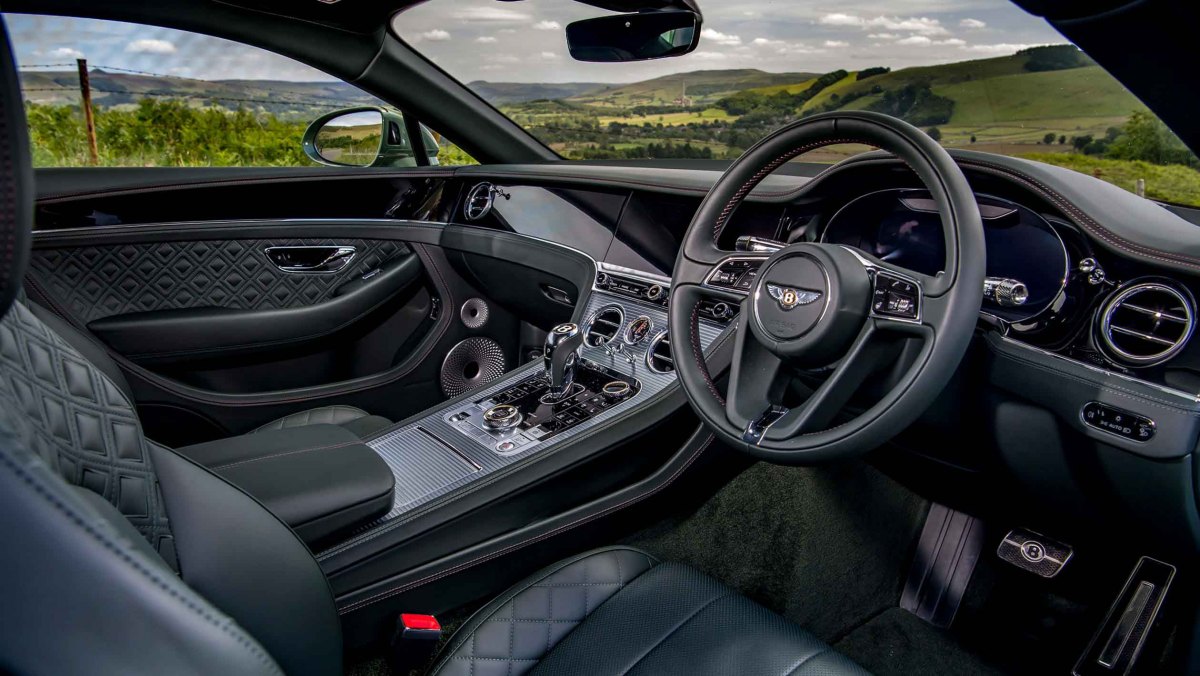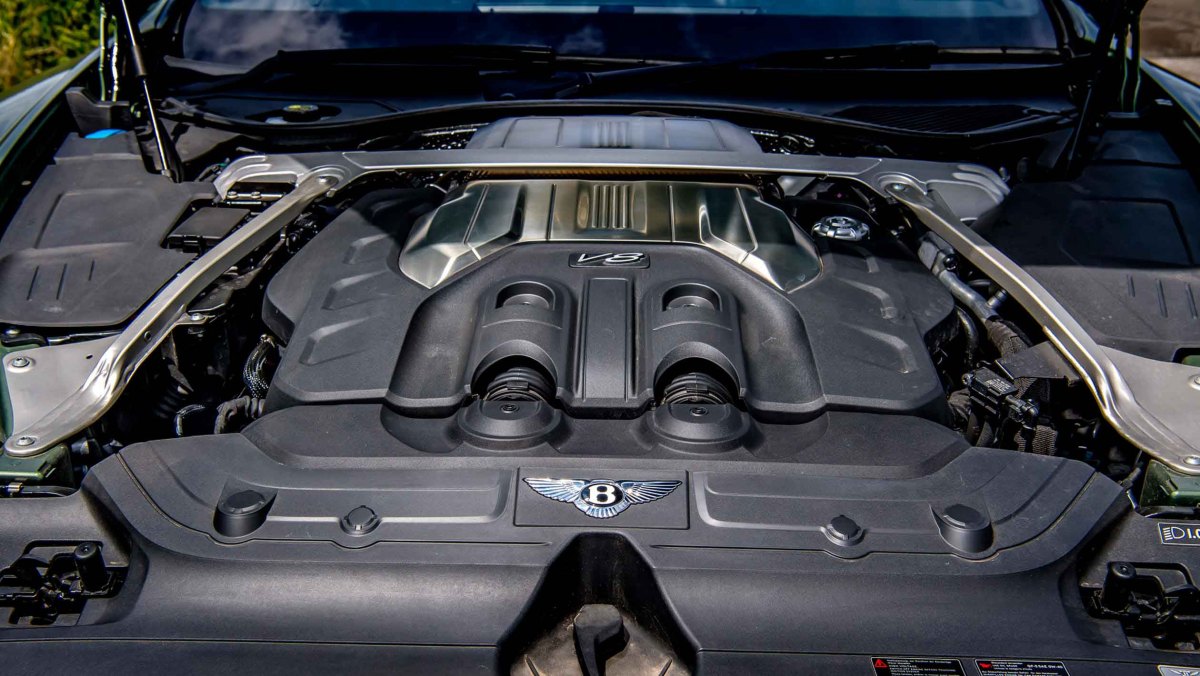The Bentley Continental GT is not just an excellent cruiser, but now one with real ability, poise and even some engagement
| Astonishing ability for such a big car, raw performance, refinement, cabin quality | |
| W12 GT not as accomplished as the V8 to drive, chassis feels like it could take more power and focus |
PRICE from $224,272
In many ways the new Bentley Continental GT is not inherently dissimilar to the model introduced in 2003 that went before it. Like before, it takes many of its underlying ingredients from the wider VW group, has a snug but useable four-seat cabin and a sense of mass and refinement that come with having an historic badge such as Bentley’s on the bootlid.
But to dismiss the new Continental GT as just an update on what was always a desirable, if slightly blunt, grand tourer would be a big mistake, because the new Conti is quite a car. Faster, more dynamic and more engaging than ever, Bentley’s success in the development and execution of the new model is a testament to the power of the VW group when there’s a clear, astute brief to work to.
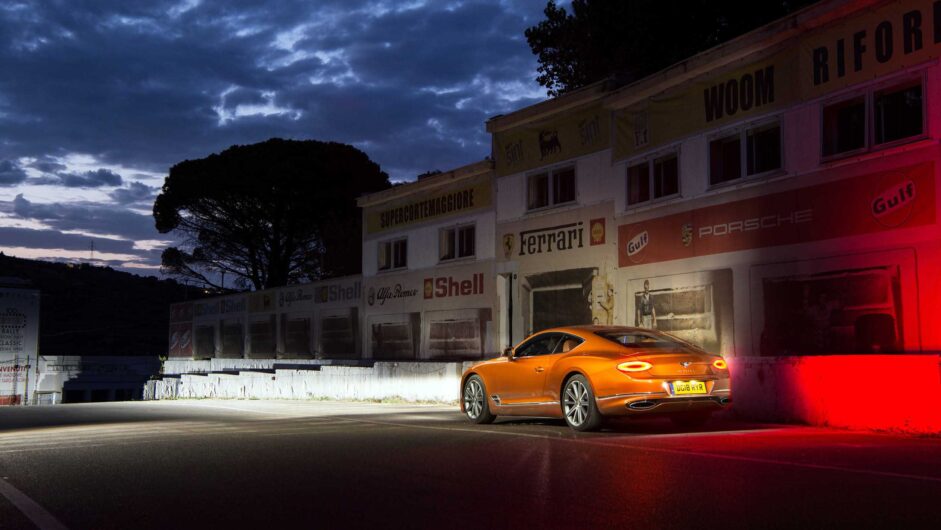
This new-found ability starts with the Continental’s chassis, which was developed in conjunction with Porsche’s four-door Panamera. As a result, the new Continental GT more faithfully complies with many of the traditional GT trademarks that were missing from the previous model, with a long bonnet, sweeping roofline and muscular rear-drive proportions (although ironically all Continental GT models are still all-wheel drive) being just the tip of an iceberg of refinements that have resulted in this all-new model.
Once again both a V8 and W12 option are available, both twin-turbocharged and both with immense performance, and again there’s a drop-top GT Convertible and Flying Spur saloon to consider if the coupe body shape isn’t your thing.
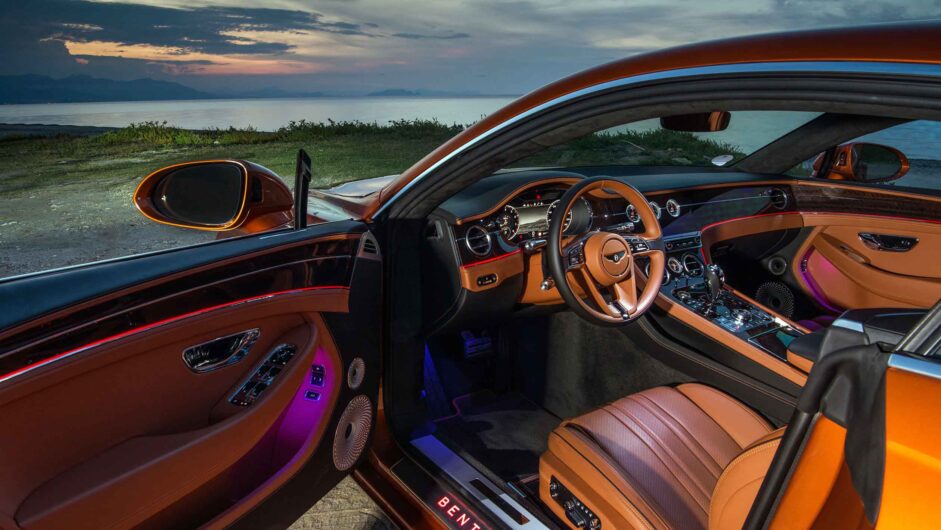
Prices, specs and rivals
The new Continental range is fairly straightforward for the moment, with V8 and W12 models separated by engine choice and coupe or convertible body shapes. All Continental GTs are then able to be fitted with a selection of option packages, the most opulent being the Mulliner Driving Specification, which adds a further $17,620 to the price no matter the powertrain or body shape.
Opening the range is the V8 model, priced from $225,725, with the Convertible costing a further $10,000. W12 models are then $7330 more than their equivalent eight-cylinder siblings, but all share an identical starting specification.
The Continental GT’s most obvious rival is the Aston Martin DB11. It is available with both a V8 and V12 engine, and in coupe and convertible forms, but makes do with a more limited model range, and is more a 2+2 for interior accomodation compared to the bigger Bentley. It’s also rear-wheel drive only, and while it has plenty of presence, it lacks the glamorous interior of the Bentley. The V8-powered DB11 starts at a marginally lower price point at a tad under $211,000, but extends to $246,545 for the V12-powered AMR flagship.

Ferrari’s new Roma takes the GT reins from the late GTC4 Lusso, and while it is quite a bit smaller and more focussed than the Continental GT, it does make for an interesting alternative if the use of those rear seats isn’t a priority.
As for other direct rivals, the GT class hasn’t so much diminished as diversified. Replacing the traditional two-door coupe shape are new high-priced SUVs and low-slung four-door coupes which try to pair the notion of a Gran Tourer with more versatility. Mercedes-Benz will not replace the S-class Coupe with a new generation, instead the AMG GT 4-Door partially fills that space, albeit at a lower price point.
Porsche’s own Panamera could also be deemed a more versatile GT in its higher Turbo S models, while BMW’s M8 Competition does approach the base price of a Continental GT, but takes things in a more overtly sporting direction. The Polestar 1 hybrid could also be considered a rival, so too the Porsche Taycan Turbo S if something all-electric appeals.
- Engine, gearbox and technical highlights
Both Continental GT coupe and Convertible models are powered by either a V8 or W12 engine. The latter is a 6-litre twin-turbo unit, which despite featuring the same capacity and a similar fundamental design as the old W12, is genuinely a brand new engine. This is also now bespoke to the Bentley brand, with Audi having dropped the W12 option for its A8, and no other brand within the VW Group featuring a 12-cylinder option.
Changes inside the engine include further development of the variable valve timing system and the firing order, making the engine smoother yet more sporting in feel. The outputs are as eye-watering as you’d expect. Maximum power is 626bhp at 6000rpm, while maximum torque is 664lb ft and is developed as a flat peak between 1350 and 4500rpm.

The V8 option is more widespread, sharing the same 4-litre hot-V twin-turbo unit found in a range of Audi RS models, Porsches and the Lamborghini Urus. In order to keep some distance between it and the W12, output in the Continental GT is rated at 542bhp at 5750rpm. However, torque is still liberal at 568lb ft between 1960 and 4500rpm.
Both engine options are paired to an eight-speed dual-clutch transmission, feeding power to a rear-biased all-wheel-drive system. While a dual-clutch system might not sound like the most natural pairing, it’s a superb example of the type and delivers an impressive balance of smoothness and responsiveness.
Rather than having to work with hand-me-down parts from the VW empire, Bentley’s engineers were involved with Porsche in the development of the Conti’s new chassis right from the word go, so they could dictate exactly what they were going to end up with.
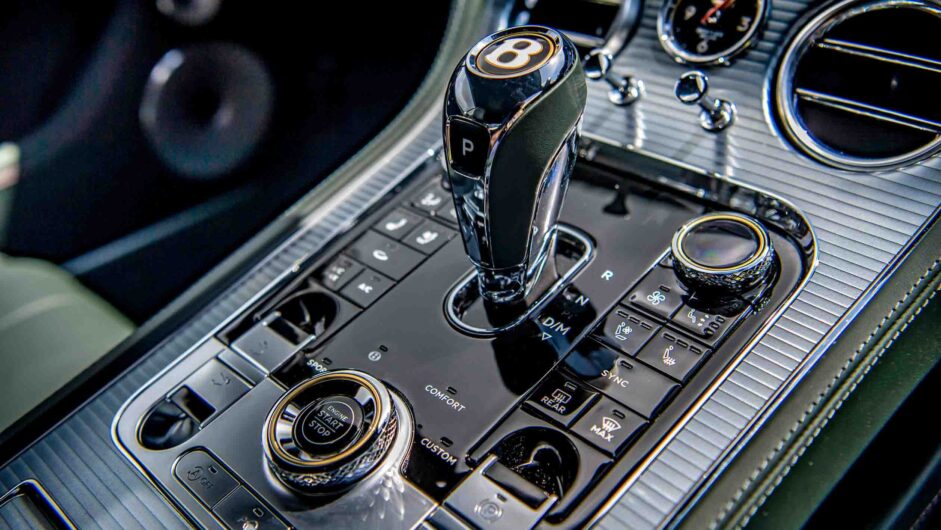
The engine is set around 150mm further back in the chassis than before, which in itself makes a huge difference to the GT’s fundamental balance. At the front there are double wishbones, with a multi-link arrangement at the rear, but at both ends there is a three-chamber air suspension system with a 48V electronically “active” anti-roll bar, and it’s these elements specifically that Bentley claims provide the biggest increases in control.
The brakes are some of the biggest seen on any production road car, with 420mm cast iron ventilated discs at the front and 380mm rotors at the back. And as before, the GT is four-wheel drive – and needs to be with that much torque available from such low revs. But the way in which the power and torque is deployed has been radically altered in the new car, and switching between the three different drive modes available is key to the distribution of energy, and to the personality of the car in general.
- Performance and 0-100 time
The Continental GT’s performance is impressive across the board, with V8 models taking 4.0sec to reach 100kph, and the W12 a faintly ridiculous 3.6sec. Convertible models add 0.1sec to the total due to their marginally higher weight figures. Top speeds are not electronically governed, with the V8 reaching 318kph and the W12 333kph.
And blimey does the W12 feel blisteringly quick in a straight line. The way it summons its energy with such effortless efficiency and simply propels you towards the horizon is as if you’ve been released from a giant bungee cord at the very extreme of its tension. It reminds me of the first time I drove a Bugatti Veyron.
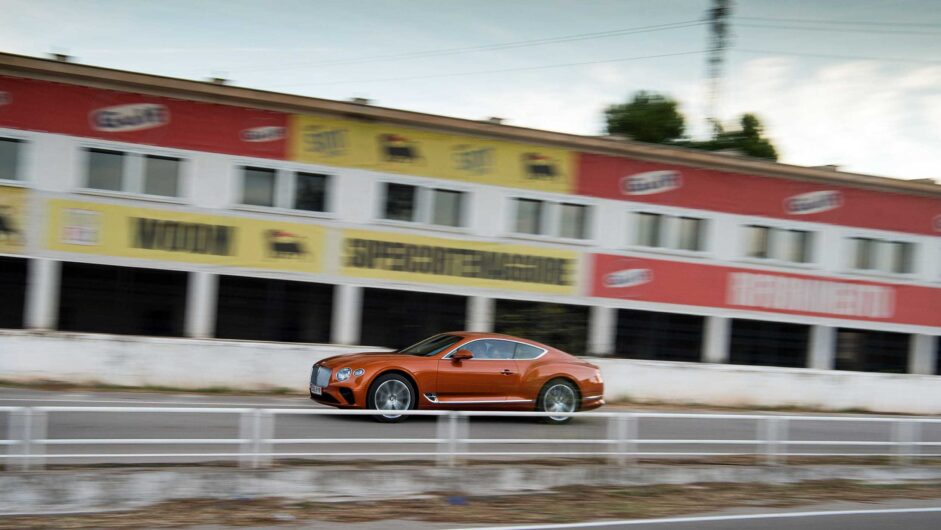
The sense of acceleration is total, yet the sense of control – as if everything is going to be just fine, despite the fact that you appear to be travelling at Mach 2 for much of the time – is also all-encompassing. Combined with a new dual-clutch gearbox that picks off ratios as quickly and calmly as a pickpocket plundering its victims all the way along Oxford Street makes the GT a deeply impressive car to drive, or even just to be driven in.
While the V8 does lack the W12’s ultimate punch, it is both noticeably more agile and charismatic. The V8’s low-speed burble is a nice counterpoint to the W12’s sometimes locomotive-like whoosh, and thanks to its own deep-rooted torque figure doesn’t feel short-changed for grunt on the road.
- Ride and handling
The Continental GT is borderline brilliant to drive, to be frank. The chassis and suspension of the new GT are arguably the areas in which it has improved the most, and there are numerous reasons why.
For starters, drivers get a choice of modes, including Comfort, Bentley and Individual. In Comfort mode up to 38 per cent of the engine’s torque will reach the front axle, which means the GT essentially feels like a cosseting four-wheel-drive limo. At the same time the maps for the dampers, throttle, gearbox, ESP and exhaust all settle into their most relaxed and least intrusive settings, and as such the GT goes properly into waft mode.
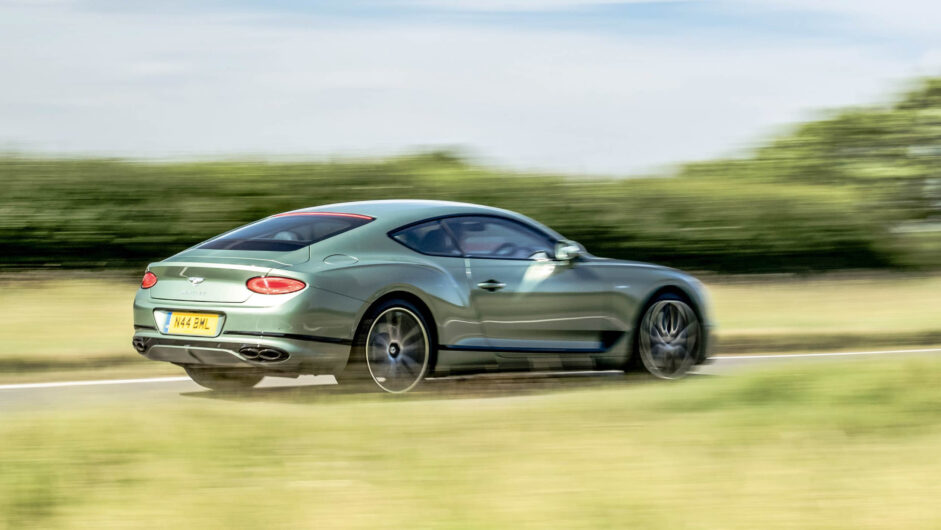
Its steering, however, remains the same across all modes, unless you go deep into its menus and select Custom mode, in which you can alter everything to your own tastes (although quietly Bentley admits that only a few owners will want to change the way the car steers). Next mode up is Bentley, and that’s the one in which the engineers believe the car gives of its best when being driven on the road. It’s a touch more sporting everywhere than in Comfort but still retains a sizeable dose of soothing refinement.
There is a delicious, deep sense of serenity about the way the GT glides across the landscape in Bentley mode. It purrs. It floats across uneven ground with a genuine feeling of majesty. And it’s also quiet, whisperingly so if you sit back and really think about it. And the cabin quality, of course, is quite exquisite.AdvertisementAdvertisement – Article continues below
Yet at the same time the GT feels properly sorted on the road dynamically in Bentley mode, because it somehow manages to disguise its vast weight to a point where, just guessing, you might think it weighed only 1700 or so kilograms, not two and a quarter tons. That’s how crisp its responses are, how nimble it feels, despite the silly numbers.

But it’s not until you select Sport mode and drive it on a track that you can fully appreciate how far Bentley has gone with the car’s dynamics this time, because do this and it goes to a level that is WAY beyond anything you might expect of it, and so far beyond the previous version that you’d have a job to associate one with the other.
In Sport mode only 17 percent of drive goes to the front axle, and everything else is set to deliver maximum sporting thrills, especially the exhaust and throttle maps. And the electronic suspension. In Sport mode the new GT feels, well, not quite like a full-blown sports car but at the very least like an extremely sporting GT car. And if you turn the stability control off it will do things and reach angles of slide that a previous GT owner would never, ever believe possible. Sideways thrills are delivered in complete and rather beautiful control – to a point where you can actually use the weight of the thing to put it in places, and at subtle angles, that actually benefit the lap time. That’s how adjustable, but also how well behaved the new GT is, if and when you take it by the scruff and throw it around.
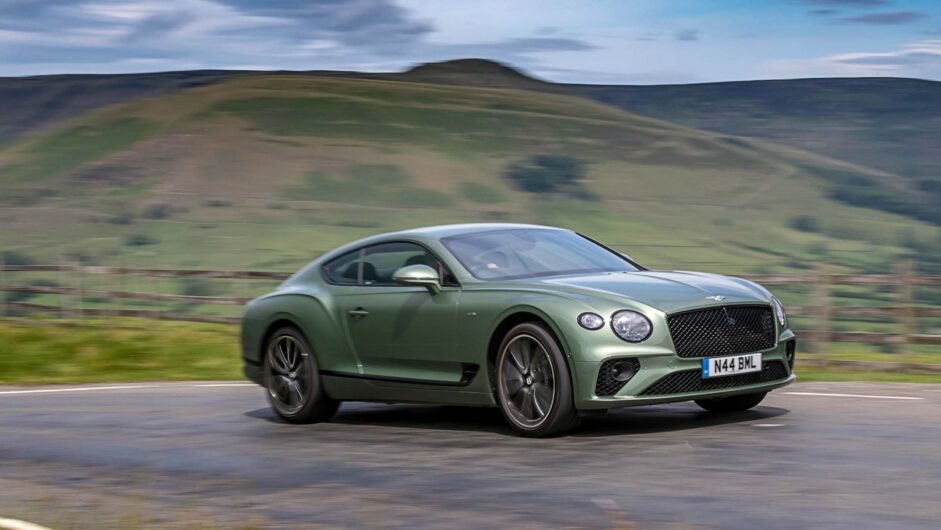
Where the new Conti GT really impresses is how it manages to meld all of the above into such a rewarding and engaging package on the kind of demanding and twisting A- and B-roads where the previous car became so unstuck. Working tirelessly to meet its remit of delivering luxury and refinement with performance, Bentley’s engineers set themselves the toughest of tasks in achieving the last of these elements with the same level of success as they knew they could nail the first two. Clearly working alongside Porsche’s engineers during the platform’s development has paid dividends. Many times over truth be told.
The three-chamber air suspension underpinning the new Continental GT may feature a chamber too many for Porsche’s Panamera with which it shares much of its underpinnings, but for the Bentley it provides the perfect base to develop something quite unexpected. No matter the driving mode you select the chassis deconstructs the surfaces beneath you knowing exactly what’s required to smooth out the imperfections, delivering the perfect rate of response and adjustability. Where the old Conti would soon get in a bit of a flap on a road with crests and undulations, the new model calls upon all the hardware (and software) available to it in order to remain composed without holding back the W12’s mighty performance. For all the adjustments provided by the dynamic controls, even when left to its own devices the Conti GT proves to be as precise and rewarding as when you fine tune every component to your personal preferences.
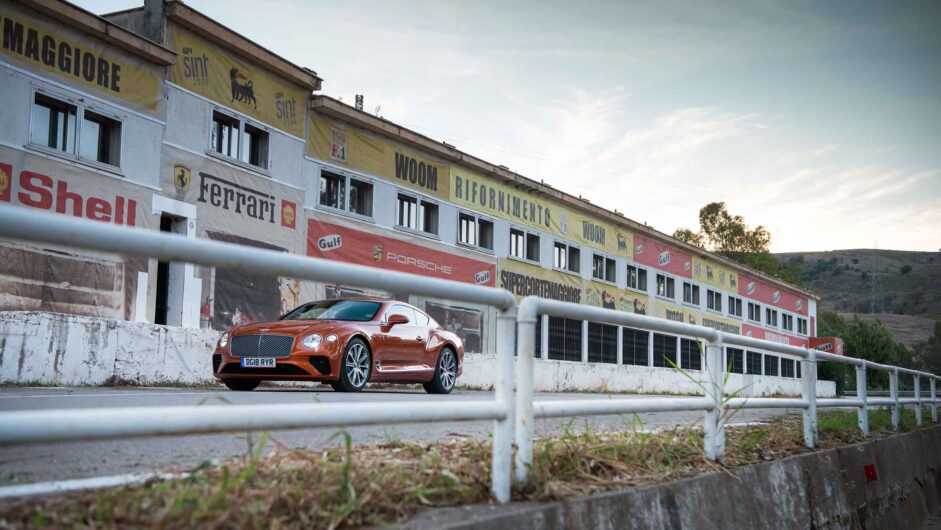
This new-found level of precision provides Bentley’s new Continental GT with a whole new deck of cards to play with, allowing it to deal out exactly what it requires in order to deliver a full-house driving experience. That it manages to do so on the road without sacrificing ride comfort while allowing you to turn the wick up further on track makes the new Conti a remarkably impressive piece of kit. One that will have the plucky folk over at Aston Martin nervously looking over their shoulder.
- L/100km and running costs
The W12’s combined fuel economy claim of 13.6L/100km doesn’t seem that horrendous, all things considered, and nor does the 278g/km emissions number – assuming such numbers are of course achievable in the real world.
V8 models are marginally more efficient with a 12.1L/100km rating (ironically the same as the W12 on its old NEDC cycle), but like the W12 sit in the top tax bracket, making it an increasingly expensive car to run day-to-day.
Bentley isn’t completely uninterested in claims of efficiency and eco-friendliness though, with both V8 and W12 models featuring the most efficient of new fuel injection systems, cylinder deactivation and a mild-hybrid system. A full plug-in hybrid version of the Continental GT is also on its way.
- Interior and tech
If the Continental GT’s regality and statesmanship doesn’t already reinforce its placement in the upper echelons of motoring, the interior will certainly drive that notion home. The cabin is simply magnificent, with a combination of superb build quality, materials, and technology that’s at once contemporary and sumptuous in a balance that’s been finely trodden by Bentley’s designers.
A real highlight is the rotating display, something that some might call a novelty, but the ability to retract the screen when not in use and instead enjoy finely wrought analogue dials and the finely detailed accompanying physical switches is one of modern motoring’s great pleasures.
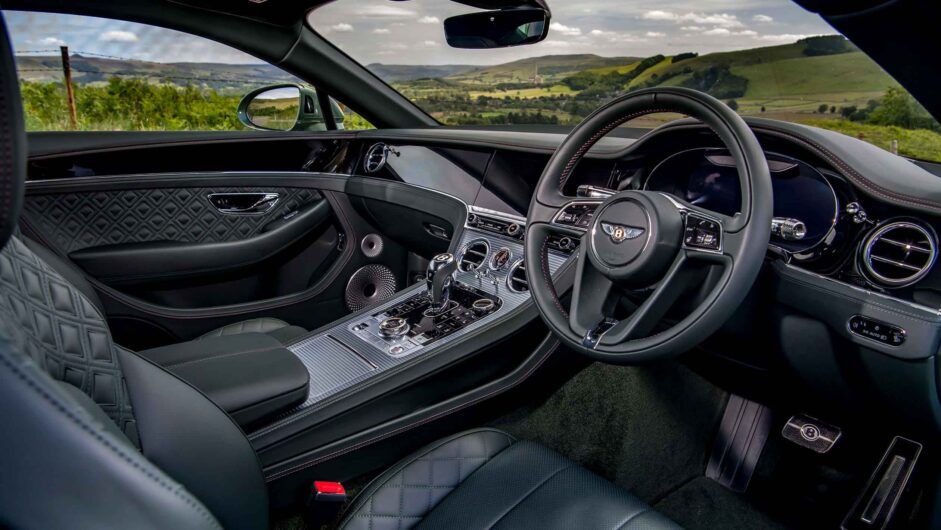
It can verge on the tacky side depending on the final specification chosen, and peer underneath all of the perfectly finished veneer and waxy leather and you will find an architecture similar to that of the Panamera, but, and it must be stressed, it remains one of, if not the most impressive cabins in any car at any price point.
That aforementioned connection to the Panamera also shows itself in the infotainment, which is no bad thing. The system isn’t quite the most intuitive available, but with exposure is never irritating to use. There are also enough physical controls within the cabin to only need to enter the screen’s lower menus for very specific tasks such as connecting phones or changing the interior ambient lighting.
- Design
Where the cabin is a triumph, the exterior design is nearly as successful, with one or two slight caveats. The overall design is much improved on that of previous Contis, underpinned by the aforementioned change in chassis architecture which gives the new car a much longer dash-to-axle ratio, pushing the cabin towards the back of the chassis and lengthening the bonnet.
The nose is bluff and upright, but the grille is neatly integrated into the GT’s surfacing and neither too big nor too small in context to the Conti’s scale. The headlights and lower openings are more controversial though, the former perhaps overwrought with their glitzy cut-glass elements. When specified right though, namely with dark elements within the headlights and omitting the chrome mesh grille options, this is easily rectified.
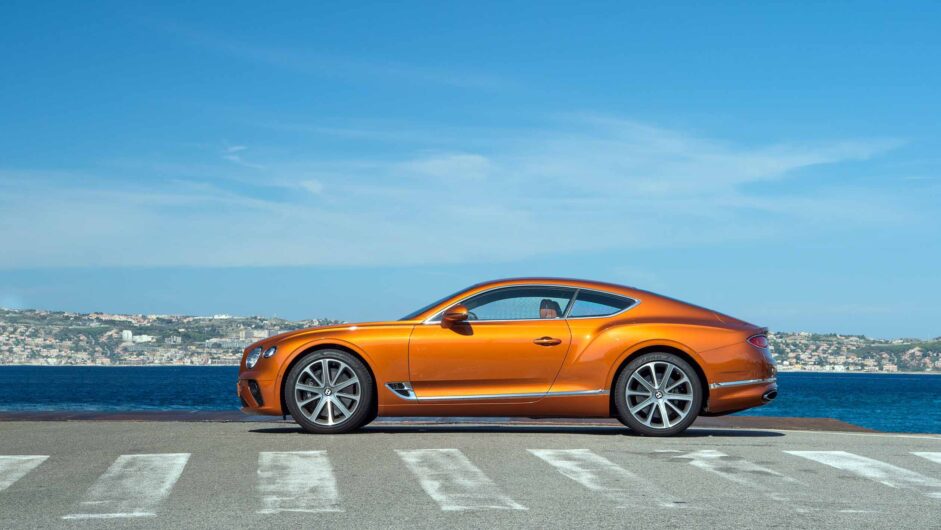
The fastback body, tough haunches and quasi Kamm-style rear end are all successful elements though. Perhaps one caveat though is that this car really needs the largest wheels possible to avoid the rear axle being overwhelmed by the sheer mass of the rear overhang.
While the Conti GT could never be called understated, the fact Bentley has pulled off such a finely wrought balance of opulence and contemporary appeal in an era of such incongruous car design deserves recognition in itself.
This article originally appeared at evo.co.uk
Copyright © evo UK, Dennis Publishing

